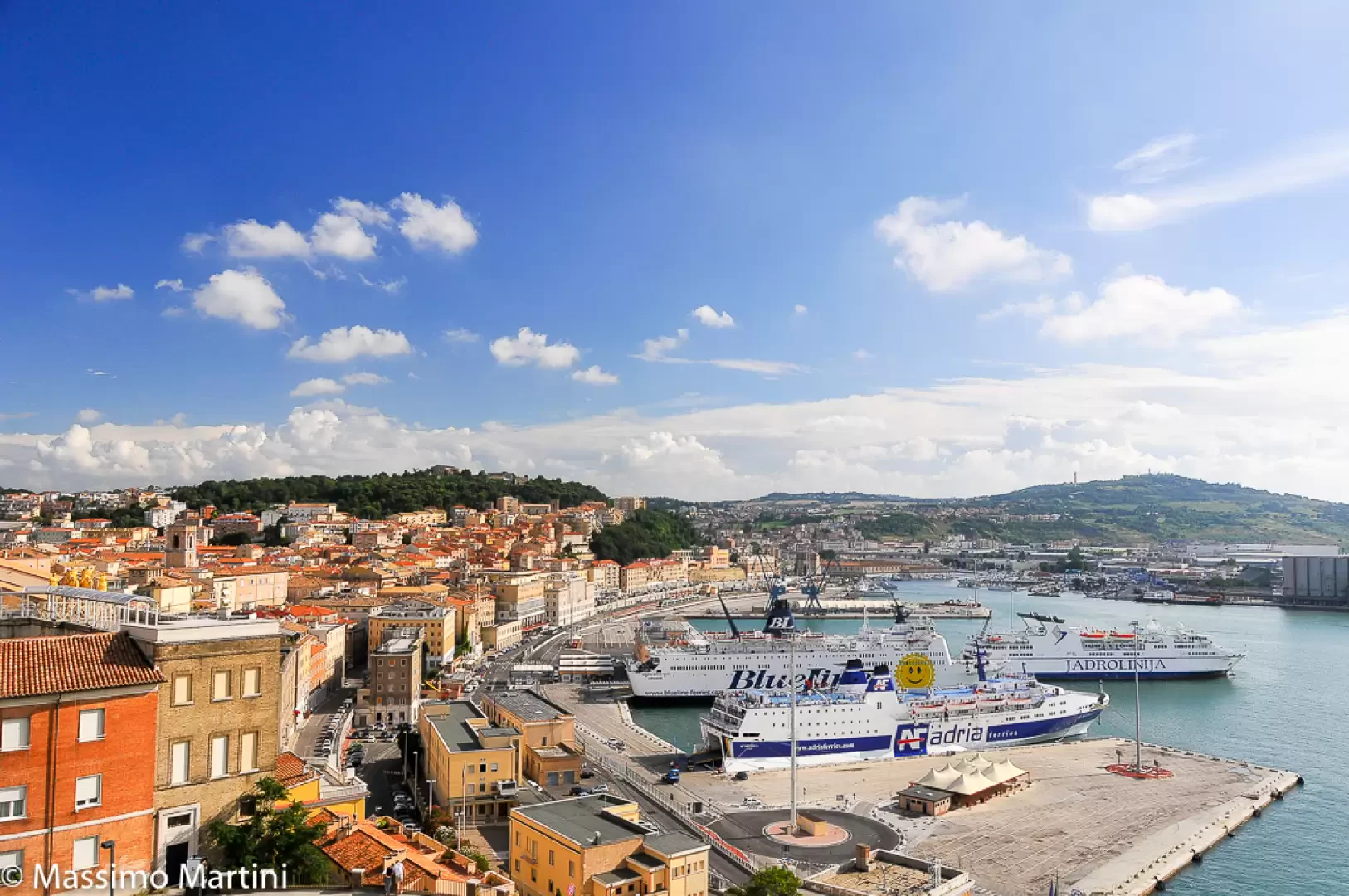Ancona

Access
Ancona is well connected: the Aeroporto delle Marche (Falconara) is 15 km away, while the Central Station is a crucial railway junction on the Adriatic line. The motorway (Bologna-Taranto) and the state road allow easy travel north and south. The provincial road network easily connects neighbouring municipalities and seaside resorts.
.Introduction
Ancona, the capital of the Marche region, overlooks the Adriatic Sea with its characteristic elbow-shaped natural harbour (from the Greek ankòn, from which it derives its name). A city with Mediterranean charm, it combines millennial history, art and breathtaking coastal scenery. Founded by the Greeks in the 4th century BC, it was an important commercial and cultural centre, enriched over time by Roman, Byzantine and Renaissance influences. Today it is a lively economic and tourist hub, with a historic centre rich in monuments and a strategic location for exploring the Conero Riviera.
Description
Ancona stands on a promontory jutting out into the Adriatic Sea, between gentle hills and sheer cliffs. Monte Conero (572 m), to the south, dominates the landscape with its natural park, while the port, one of the most important on the Adriatic, marks its identity. The coastline alternates between sandy beaches, such as Passetto, and rocky coves accessible only by sea. The hinterland is characterised by gentle cultivated slopes, typical of the Marche countryside.
Founded by the Syracusans as Ankón, it became a Roman colony in the 2nd century BC, developing as a maritime hub. In the Middle Ages it was a free commune and then part of the Papal State, enriched with churches and noble palaces. Its symbols include the Arch of Trajan (2nd century AD) and the Cathedral of St Ciriaco, a Romanesque-Byzantine masterpiece. Personalities such as the Renaissance painter Carlo Crivelli and the composer Gaspare Spontini have marked its cultural history.
The economy is based on the port, a commercial and tourist hub, and on sectors such as shipbuilding, fishing and logistics. Tourism is growing, thanks to the historical beauty and the Conero Park. Agriculture produces DOC wines (such as Rosso Conero) and extra virgin olive oil, while local craftsmanship boasts ceramics and traditional shipbuilding.
The Feast of San Ciriaco (patron saint of the city, 4 May) is a popular event, with processions and shows. Festivals include fish festivals and vincisgrassi (typical baked pasta). Ancona cuisine is a triumph of seafood flavours: brodetto alla vastese, stoccafisso all'anconetana and olive all'ascolana. The art of violin making and weaving endures in the historic workshops.
The Conero Park offers scenic trails such as the Due Sorelle, with views of stacks and sea caves. The Passetto, with its rock-cut stairways and World War II bunkers, is an iconic place. For history lovers, don't miss the National Archaeological Museum and the Loggia dei Mercanti. A curiosity? The city is crossed by the 43rd parallel, the same as Assisi and Santiago de Compostela.
Information
Area: 124.84 sq km
Altitude: 16m
Maximum elevation:
Number of inhabitants: 101300
Name in dialect:
Inhabitant name:
Patron Saint: San Ciriaco
Bordering towns: Agugliano, Camerano, Camerata Picena, Falconara Marittima, Offagna, Osimo, Polverigi, Sirolo
Villages and hamlets: Aspio, Candia, Casine di Paterno, Gallignano, Ghettarello, Massignano, Montacuto, Montesicuro, Paterno, Poggio di Ancona, Sappanico, Varano
Website: https://www.comune.ancona.gov.it